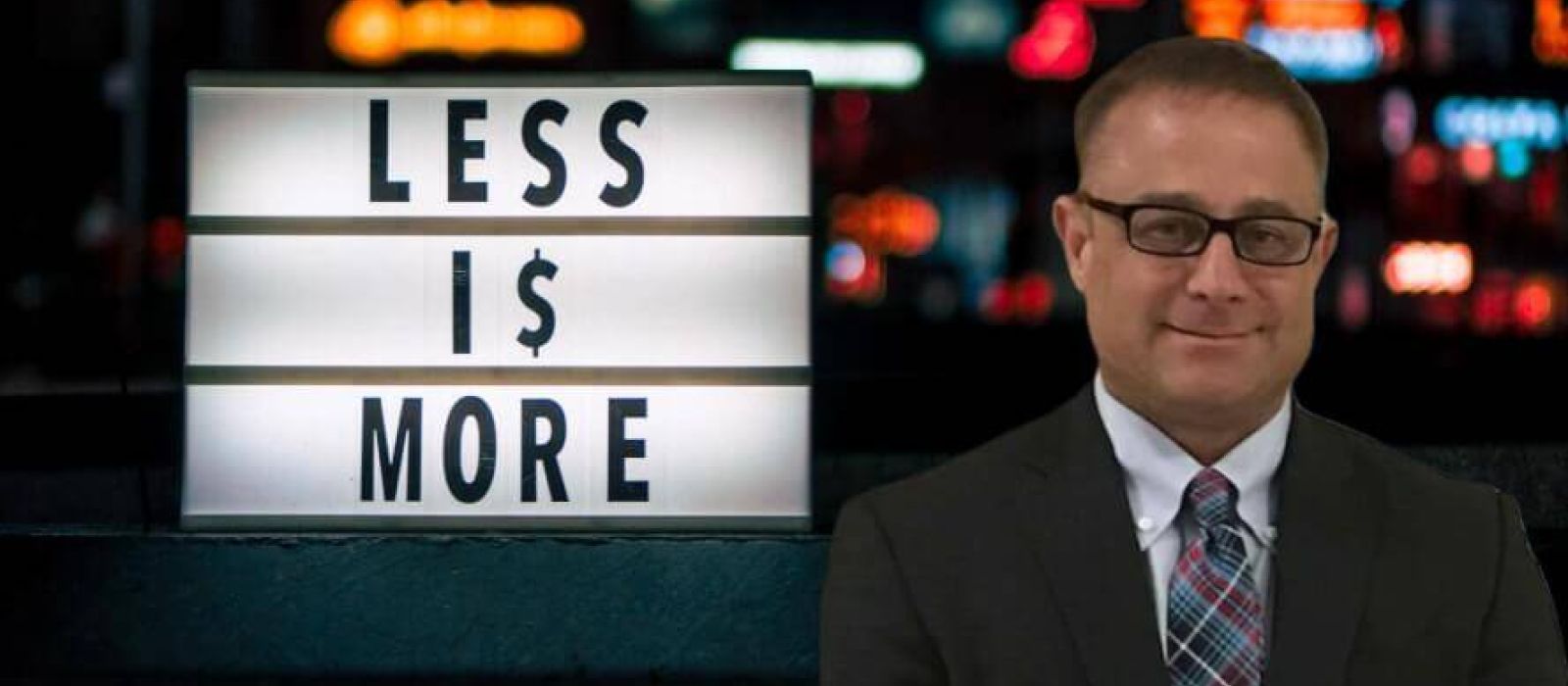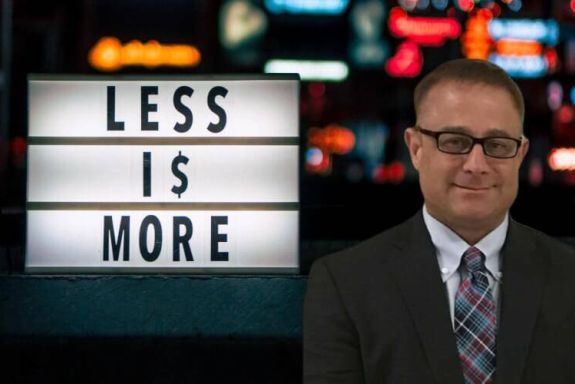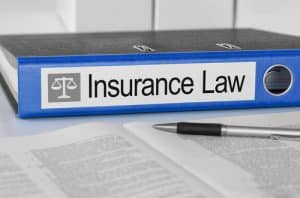

If we don’t win, you don’t pay.
NO WIN – NO FEE

ON CALL 24/7

U.S. Marine

The answer is, maybe, depending on how hard you can fight and the amount of insurance coverage to pay, as discussed. Under California law, the crash victim can only recover damages for diminished value from the party who damaged their motor vehicle. Most insurers do not offer reduced value protection under their Collision Coverage rider. If it is covered, coverage will be limited, based on the auto’s fair market value before the crash minus the cost of vehicle repairs. It’s not as simple as using a calculator if consumers want to succeed and qualify for this extra money.
Unhappy With The Insurance Company?
Did the insurance company deny your claim for paying diminished value despite witnesses and evidence indicating it was not your responsibility? Are you stuck with a deductible and a car worth far less than its original appraisal value before the accident? Believe it or not, with some exotic or historic vehicles, the victim is less concerned about their health than they are about their classic cars. I am Los Angeles insurance law attorney Michael Ehline. I deal with estimates and property damages in personal injury cases for a living. Below, I will share the secrets of recovering diminished value for motor vehicles.
To begin with, a car that has never crashed could lose significant resale value even when repaired after an accident. Finally, I will offer a free consultation if you still need more info about handling a diminished value claim in California with an insurance company.
Car Culture and the Diminished Value Claim
So, let’s start—there’s no question that our whips reign supreme in California’s car culture. As Los Angeles personal injury lawyers, many of our most severely injured clients are more concerned about the diminished value of their damaged autos than themselves.
And when one of our clients owns a classic, custom, or sought-after brand names car like a Mercedes S-Class or BMW M-5, many owners complain that:
“My car is no longer cherry,” or “I will never get what my car is worth now, can you get me money for the loss of value?”
Many of our clients are shocked when they discover that the defendants and even their auto insurer will fight tooth and nail to pay far less than a car is worth, let alone spend money on a lost or diminished value. Most insurance adjusters are professional wordsmiths and taskmasters when it comes to defeating a diminished value claim.
They will argue that even though automobile insurance covers your vehicle, you can only get enough compensation to restore it to the same look as before the collision. But when you try to sell your car or do a trade-in, a potential buyer purchaser can see its accident history using an app like Carfax. Because of this, auction houses and used car dealers may refuse to pay the actual value of your or trade-in value. Typically, since it’s not cherry, they will offer you far less than the exact value of your vehicle.
Since injury lawyers don’t usually get part of the property damage payout, they are not exactly excited about making a California diminished value claim. As such, only the savviest and most sophisticated personal injury lawyers understand or even care about your vehicle’s value. It automatically loses its worth before and after a crash.
Even a high-end vehicle insurance adjuster will argue with owners about filing a diminished value claim to recoup their car’s value loss after a wreck. The insurance company pays less than full value on most claims unless forced under the car insurance contract. Don’t assume uninsured motorist coverage will handle this unless you are prompt and have the coverage. In most states, the insurance contract excludes diminished value if you caused the crash and structural damages with the other driver.
The insurance industry would prefer not to pay diminished value for a fully repaired vehicle. This is why a police report at the accident scene is helpful to show liability for severe structural damage to the damaged car, truck, or other physical damage claims. Make sure to check with your state insurance commissioner’s office when involved in an accident before yelling at the insurance adjuster or insurance agent bearing the bad news. Also, California has a three-year statute of limitation on diminished value claims. Even then, getting the full value of your insurance for your car’s market may require forming an attorney-client relationship with a top-notch lawyer to file a claim for the covered loss.
What Is A Diminished Value Claim For A Motor Vehicle?
A diminished value claim is when a car owner or their lawyer demands the difference between their model’s current market value and the car’s make before the wreck. However, as discussed below, there are many types of diminished value claims for a vehicle.
What Are The Different Types Of Diminished Value Claims?
- Repair-Related Diminished Value

As it sounds, repair-related diminished value happens when you experience repair-related diminished car value due to the repairs themselves. The repair shop can decrease the value of your car. Most of all, it concerns a repair shop’s failure to use original OEM parts instead of aftermarket parts or supplies.
Many leasing companies will ding you for any post-accident repairs made with low-end parts or related items. So it’s not just vehicle parts insurance companies generally pay less to cover in a car accident. What if your insurance company paid a repair shop to repair with used Chevy paint to spray the repaired area instead of the original, factory OEM Mercedes Benz paint, for example?
Maybe the paint is the wrong color or looks like an orange peel pattern? Or how about when the repairman uses a non-original bumper, headlamps, etc.? So, you have two issues with these cases.
“you want to be sure that when you get repairs done, it’s with Porsche or Tesla parts or Mercedes parts and not generic parts,” according to Janet Ruiz, strategic communication director with the Insurance Information Institute. She said, “Those sometimes will diminish the value of your luxury cars.”
One issue is the quality of the repair, and the other is the items used to make the repairs. In either situation, low-quality goods and services mean a lesser value in the market when the vehicle is listed for resale. This is particularly the case when trying to calculate the diminished value of a classic car, such as a 1957 Porsche 356 A, for example. The final diminished value depends on many variables associated with an auto accident and the damaged vehicle type, model, and year.
A super cherry car like that, even if you can find the original parts, will never get the market’s full value because it is no longer cherry. So, how do you reconcile all of this? First, you must look at your insurance policy’s coverages and exclusions. If you don’t have full range, the other party may not have enough to cover all the damages, let alone enough to pay the diminished value. So when a car cannot be restored to its original condition, what happens?
The insurer will often argue that they will only pay your car’s depreciated value. This is normal in cases of total loss. But that is a non-sense argument because it does not address that a crashed car, even when depreciated for everyday wear and tear, is still diminished in its actual value compared to a used car that did not hit. Eventually, if you fight hard enough, the insurer may finally attempt a 17c calculation, discussed below.
- Inherent Diminished Value
Generally, an insurer will try to pay what’s known as the “inherent diminished” value of your car. This happens when a motor vehicle loses value because it now has a history of damage indicated in the car’s title. However, as discussed above, this type of diminished value claim might ignore the fact that the wrong paint or parts were used.
In that case, the insurer is underpaying the claim. This remains true regardless of the repairs after the accident because the repairs were not intimate and were wrongly made.
- Immediate Diminished Value
This claim is rarely deployed since most people don’t take a property damage claim to court. Here, the resale value before the damage and immediately after gets calculated by the auto’s insurer or a court. Since the insurer was directly involved in adjusting and controlling the repairs and claims adjustment, the insured or third-party claimant will argue whether the repairs were completed wrongly. Because of this, the vehicle is not in the proper condition to achieve a par value sale.
What Are The Steps In Making Diminished Value Claims?
As noted above, a formula known as 17(c) will often determine the amounts due and owing for a typical diminished value claim.
“Most insurance companies use a calculation known as “17c” to arrive at a monetary value for your car in post-wreck condition. This formula was first used in a Georgia claims case involving State Farm and derives its name from where it appeared in the court records for this case – paragraph 17, section c.” (Source).
Let’s look at the steps you or your lawyer need to take to calculate the diminished value below the 17(c) threshold.
- Hire an expert to calculate the pre-collision worth of the vehicle. Although many people think you can use the NADA or Kelley Blue Book, most California insurance companies will not accept this dollar amount. Instead, the adjuster will compare the vehicle’s value based on cars in similar years, conditions, models, and odometer readings in the geographical markets. The adjuster will likely want to use “The Auto Trader” and similar publications. We may be able to help you retain experienced vehicle appraisers who expertly write Diminished Value reports on your behalf.
- Use a 10% cap on total vehicle value—Next, the insurer will typically use a 10% cap, commonly referenced as the “base loss of value.” This is the most your insurance company will pay out since that is the formula recognized by the courts.
- The damage multiplier—Next, the insurance company will utilize a damage multiplier to adjust the vehicle’s calculated worth, as discussed in step two above. It’s a bit complicated, but in a nutshell, the 10% cap becomes multiplied using numeric amounts from 0 to 1 based upon any structural damage occurring during the crash. The so-called “zero-multiplier” formula means zero structural damage or no panels have been replaced. Next, the one multiplier serves as the figure for a motor vehicle with horrible structural damage.
Below is the typical scale used by adjusters to achieve step 3:
- 1.00: Severe damage to the vehicle structure.
- 0.75: Major damage to panels or vehicle structure.
- 0.50: Moderate damage to panels or vehicle structure.
- 0.25: Minor damage to any panels or the structure itself.
- 0.00: Zero structural damage.
4. Utilize the mileage multiplier – The insurer will calculate a mileage deduction based on their formula. The auto’s adjusted value discussed in step 3 above gets multiplied using the mileage multiplier. Hence, the diminished value of the automobile boils down to this formula
- 1.00 – 0-19,999 miles.
- 0.80 – 20,000-29,999 miles.
- 0.60 – 40,000-59,999 miles.
- 0.40 – 60,000-79,999 miles.
- 0.20 – 80,000-99.999 miles.
- 0.00 – 100,000+ miles.
Many people now believe they know a lot about car accident claims. They mostly read information on the internet about suing and getting money. This belief couldn’t be more wrong. Insurance companies’ misinformation keeps people from knowing the truth. While filing claims for accidental vehicle damage, most likely about the diminished value.
Do I Have A Claim?
You have a diminished value claim if you or your loved one’s car got wrecked in an accident caused by another driver’s negligence. Should you go for it? Are you prepared for the hassle of handling this matter? Is this case worth all the time and energy spent on it?
The short and easy answer to all the questions is that you must go for this claim. It is worth every second of your effort and struggles to negotiate from strength. Below are some common reasons why so many people don’t fight to compensate for their car’s diminished value after wrecks.
Reasons Why So Many People Avoid Diminished Car Value Claims?
- First, even after browsing the deepest corners of the internet and obtaining all the valuable information they can about car accident claims, people remain misinformed about them. Car insurance companies spread this perception. These companies make people think diminished value claims don’t apply to a particular state. But that is sheer misinformation. Also, this is one way malevolent adjusters try killing one of your many rights.
They will frustrate you when making claims for the damages done to you and your car in a wreck.
- Another reason people avoid these claims is that they are already underestimating the value of their cars. Most people believe only an expensive car’s diminished value is worth a fight. So they think a used Toyota’s reduced amount is not worth fighting. Perhaps the costs of fighting don’t merit the upside? This hesitation is often a wrong assessment of the situation. But no matter what type of car you have, you must file a claim for its diminished value. Even if your vehicle has been used for years, consult a lawyer. Let your lawyer decide whether or not it is fit to fight for a diminished value claim.
What About The Hassles & Complications Of Pursuing A Diminished Value Claim?
Due to insurance companies’ unwillingness to pay the diminished value of car claims, things can worsen. For example, when you try to file this claim. It is to say that the case will be nearly impossible for you to handle. However, you must talk to an experienced lawyer and see the claim’s potential.
Not pursuing it at all is not advisable. It would help if you remembered that every dollar lost in your vehicle’s resale value means money coming out of your pocket at some time or another. Whether or not you want the wrongdoer to pay for it depends on your take on the case.
Speak With a Diminished Value Claim Accident Lawyer In Los Angeles Today
As mentioned above, people don’t usually claim the diminished value of their cars. They don’t think it’s worth the pursuit; they avoid such a claim because they don’t want to hassle themselves, and it’s often another claim that doesn’t sound significant to them.
Only an experienced lawyer can help these people come out of this mindset. He can tell the people how valuable the claim is and why fighting makes sense. Once again, people should talk to their lawyers instead of reaching the results themselves. Call us today for a free consultation with a tier one car accident attorney-client relationship at (213) 596-9642.
Here are some additional answers to frequently asked questions:
-
Accordion - FAQs
Accordion - FAQs
- Can I Get More Money for Personal Injury With a Lawyer
- What Is A Personal Injury Lawsuit?
- What is The Civil Discovery Process?
- Bicycle Accident FAQs
- Minor’s Compromise FAQs
- What Should I Do If I’m Hurt Visiting or Vacationing in California?
- How Do I Enforce My Personal Injury Judgment?
- Are Fishing Expeditions Allowed At Depositions?
- Will My Legal Status Affect my Lawsuit?
- Pure Comparative Negligence Explained
- Determining Case Value
- How Do I Get A Rental Car After My Car Accident?
- How Much Money Do Personal Injury Lawyers Make?
- Los Angeles Car Accident Statistics | Safety, Tips and Data

